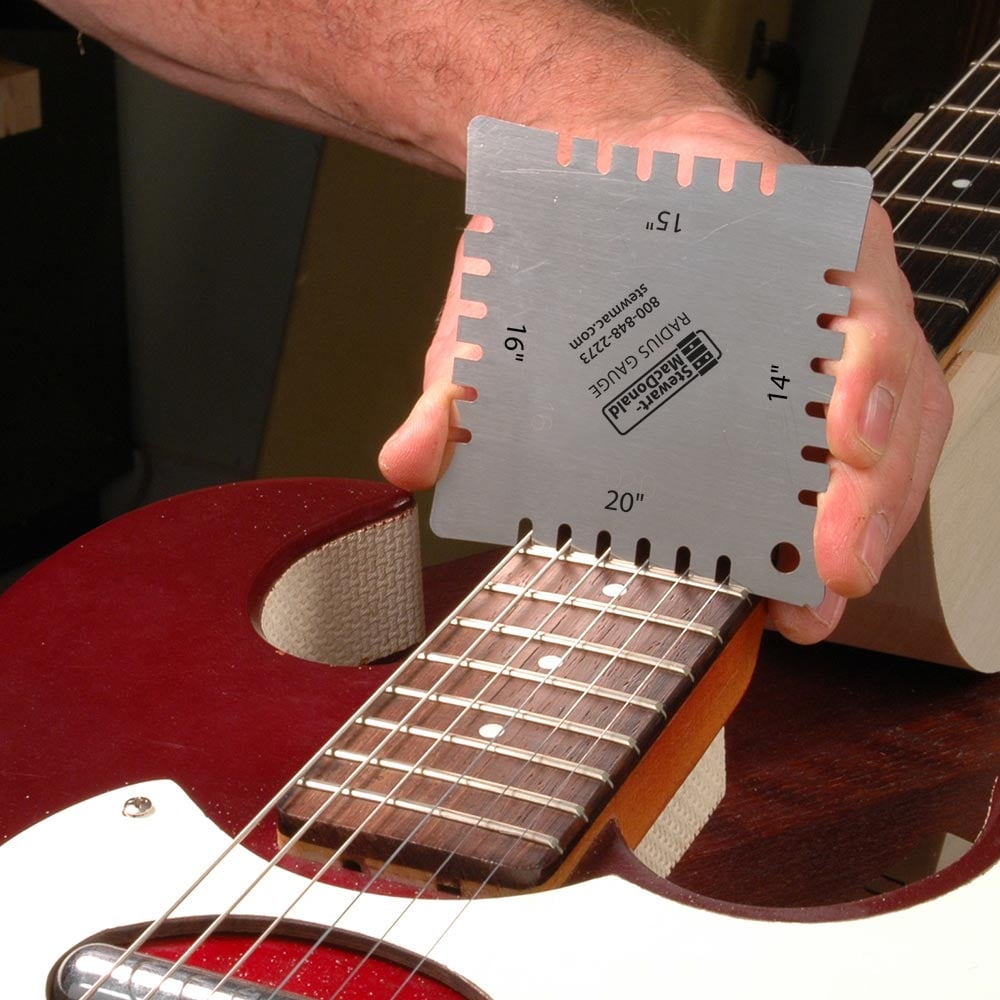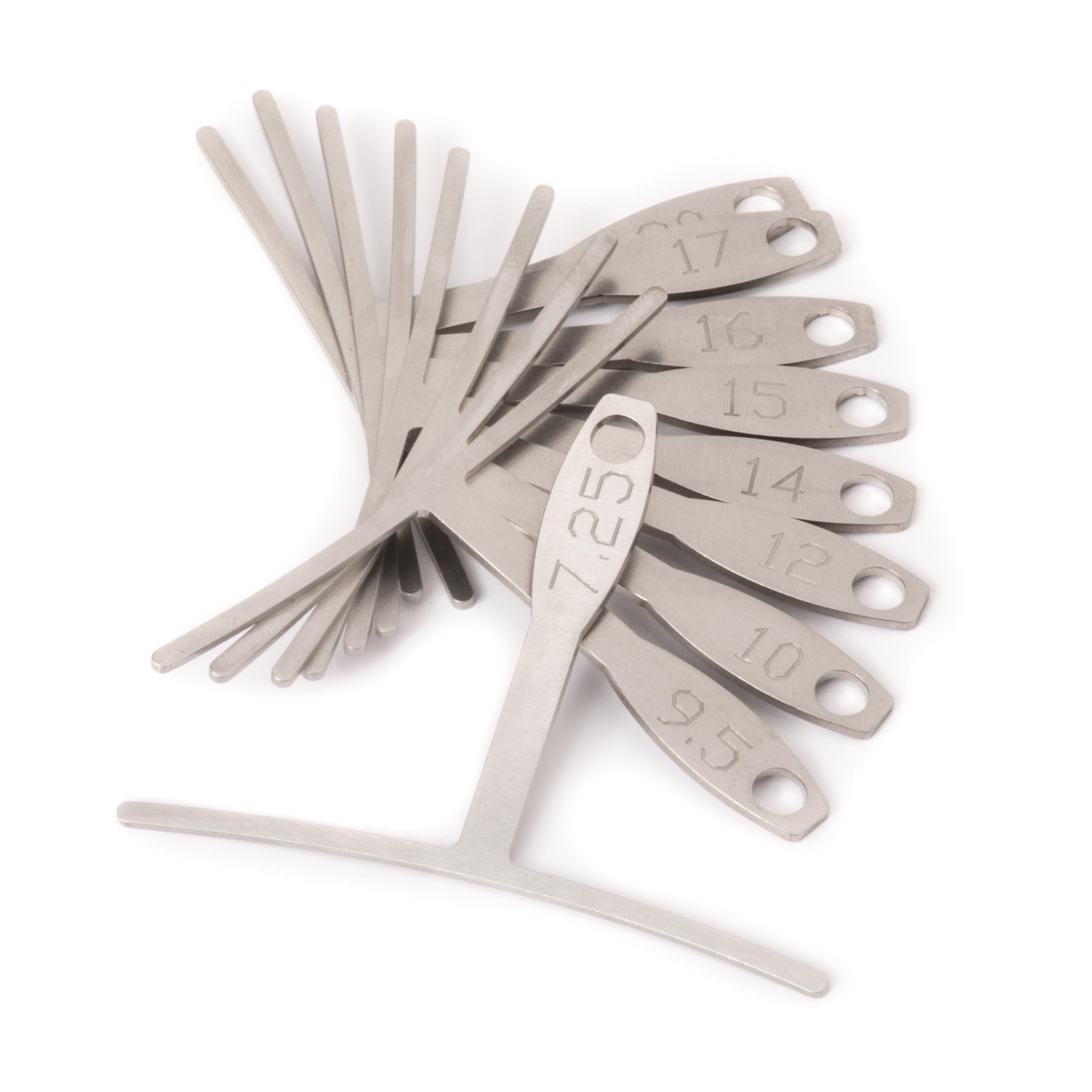Radius gauges for guitar work
V-5432
Dan Erlewine demos the three kinds of Radius Gauges for setup and fretwork.
Video Transcription
[on-screen text reads: 3 Radius Gauge Styles]
Dan Erlewine: Radius Gauges are critical measuring tools. They're just as important as digital calipers or a six inch rule [on-screen text reads: Dan Erlewine - Stewart-MacDonald]. A radius gauge is how you find out what the radius of a fretboard is and whether or not it's consistent all the way down the neck. By checking the fretboard radius, you know which radius sanding block to choose if you're leveling the fretboard or leveling frets so that you remove the smallest amount of material possible. Then during setup, you can see when the bridge saddle radius matches the fretboard radius.
Standard Radius Gauges
We have three styles of radius gauges, and each is perfect for a certain task. These are the standard gauges [on-screen text reads: Standard Radius Gauges]. They're set of two. One has a seven and a quarter, nine and a half, 10 inch and 12 inch edge. The other has a 14, 15, 16, and 20 inch edge. These are what I use for reading fretboards and acoustic guitar bridge saddles, and for laying out the radius when I'm making the saddle for an acoustic guitar.
Notched Radius Gauges
The notched gauges [on-screen text reads: Notched Radius Gauges] can read the fretboard with the strings on. They fit over and between the strings, so you can do a strings-on reading with the customer standing there and you'll learn a lot right away. The gauge with the narrow notches can read from the nut up to maybe the sixth or seventh fret, and the gauge with the wider notches takes over there and can read all the way to the end of the board. Because the notch gauges measure the narrow and the wide end of the fret board, they're sold in a set of four.
Understring Radius Gauges
And the third style is this understring gauge [on-screen text reads: Understring Radius Gauges] used for setup. With it, you can measure and adjust the under string radius to match the fretboard radius exactly, because it eliminates the six string diameters from the equation. If you want to be accurate, it's the radius under the strings that has to match the fretboard radius, not the top side. A bonus with the understring gauge is that you can also use it to read the fretboard radius, and it's not as wide as the standard gauges, so it's perfect for reading and adjusting pickup pole pieces without hitting the pickup cover, or for checking the tops of the bridge saddles on a Tune-O-Matic type of bridge if you're changing the radius. I'm taking this from a 12 down to a 10.



